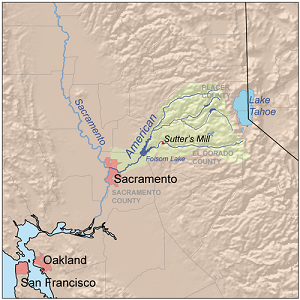The Willamette River
accounts
for 15 percent of the Columbia River's flow. Its main stem is 187 miles -
301 km - in northwestern Oregon as it flows northward between the Oregon
coast and Cascade ranges. The Willamette Valley basin that contains two-thirds
of Oregon's population and is one of the most fertile agricultural regions in
North America, hence the destination of many 19thcentury pioneers
traveling on the Oregon Trail. The river supports 60 fish species, including
salmon and trout.
The
Upper Tributaries of the
Willamette originate in the mountains south and southeast of Eugene and
meanders north to join the Columbia about 101 miles - 163 km - from the
larger River's mouth on the Pacific Ocean. The channel is the main navigational
channel for Portland's harbor and industrial areas.
The Willamette
River has over 50 Bridges and Crossings
Watershed The
Willamette River drains a region of 11,478 square miles - 29,730 km2
- 12 percent of the total area of Oregon. Watersheds bordering the
Willamette basin include the Deschutes and Sandy Rivers. Sixty-four percent
of the watershed is privately owned, while 36 percent is publicly owned.
Recent History by the
early 20th century, major river-control projects began to take
place. Levees were constructed along the river in most urban areas, and
Portland built concrete walls to protect its downtown sector. Decades later,
many large dams were built on Cascade Range tributaries of the Willamette. The
Army Corps of Engineers operates 13 such dams, which affect flows from about
40 percent of the basin. With development near the river came increased
pollution. By the late 1930s, efforts to stem the pollution led to formation of
a state sanitary board to oversee modest cleanup efforts. In the 1960s, Governor
Tom McCall led a push for stronger pollution controls to enhance historical,
natural, and recreational values along the river.
There are 20
Dams on the Willamette as well as a series of Levees Dikes and Channels
The
Willamette Greenway program has created a system of parks, trails, and wildlife
refuges along the river leading to the 1998 appellation of American Heritage River.
Connect for a Willamette River Itinerary




























